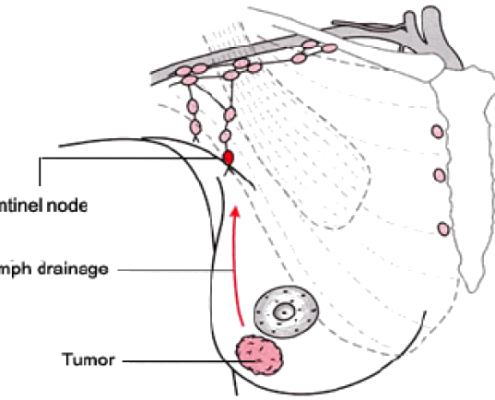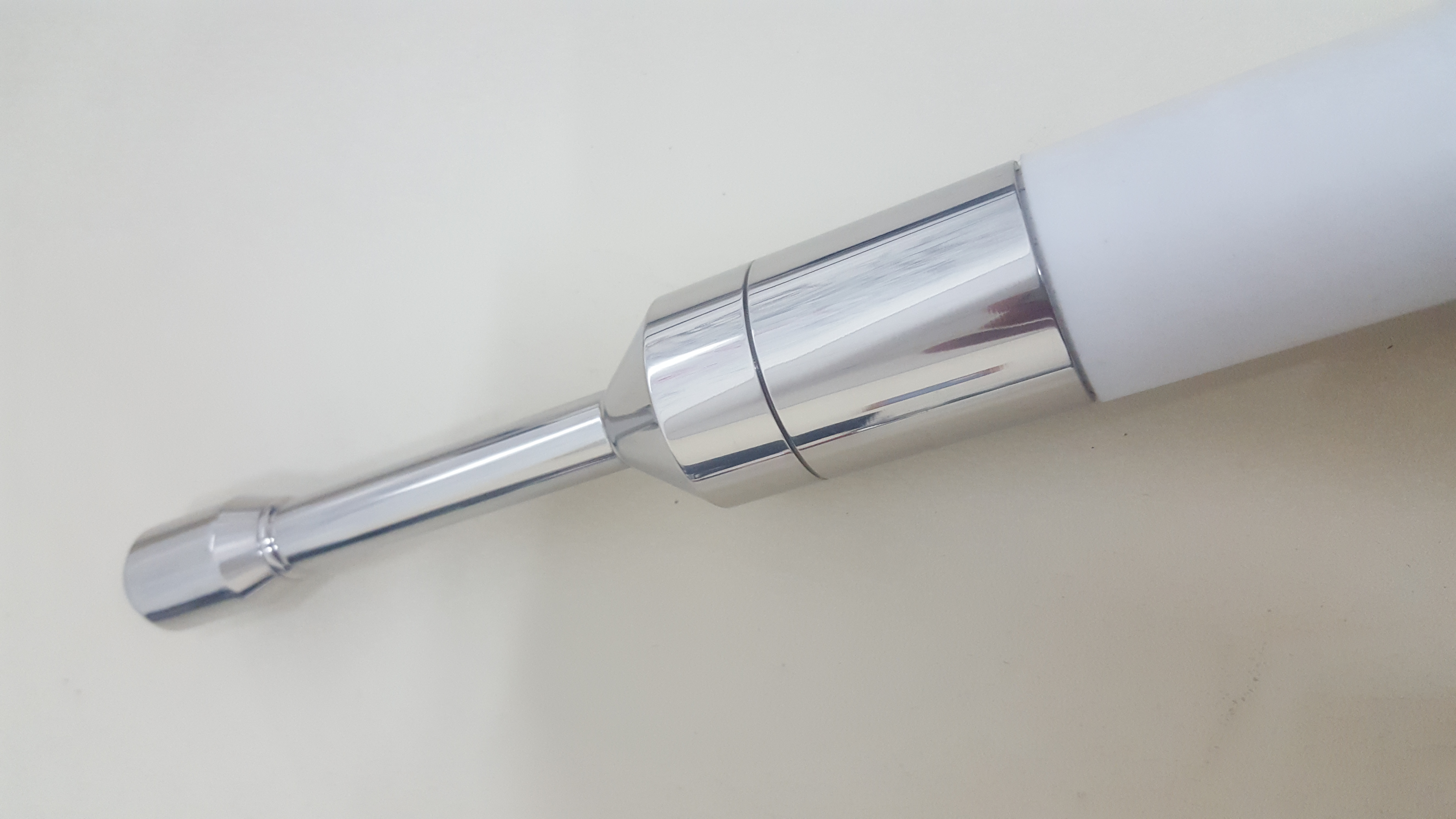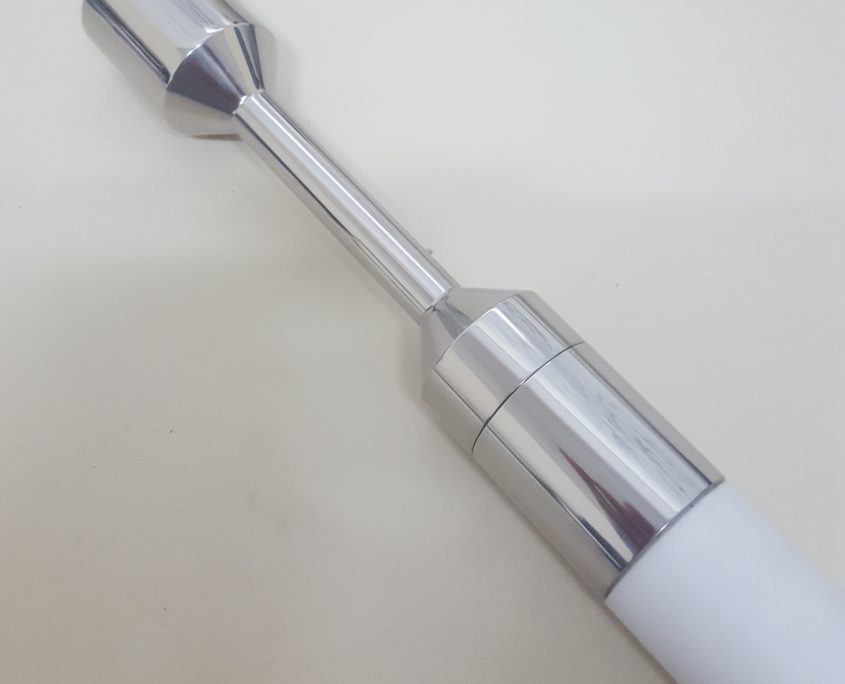Intraoperative Gamma Probe
Introduction
In the field of Nuclear Medicine, it is common to perform radioguided surgeries, which consist of the use of an intraoperative gamma probe (GSP), for the detection of some malignant tissue that emits gamma rays. The emission of gamma rays is due to radiopharmaceuticals that have previously been administered to the patient. Some of the most used procedures are the detection of sentinel lymph node (SLN), and the localization of a radioactive seed (RSL) for the identification of small and non-palpable tumors.

Figure: SLN Procedure.

Figure: RSL Procedure.
Medical equipment
A wide selection of probes is designed for different surgical applications, with the ability to detect at different energy levels of radiopharmaceuticals. The use of advanced technology and crystals results in a precise and highly sensitive detection tool, for be used in radioguided surgeries.
All probe types connect to the same control unit by bluetooth communication. The unit control is a user interface that delivers a clear and distinctive audio signal and produces excellent energy discrimination which allows guide precisely the physician in the surgery.
Gamma probe
The gamma probe is the standard probe for the detection of sentinel lymph nodes in the surgical treatment of cancer (sentinel technique, Breast Cancer, Melanoma).
The probe is optimized for the energy range around 140 [keV] (99mTc) and when used intra-operatively the probe has to be protected by a sterile latex cover.
Additionally there is a set of collimator sleeves with a different field of view (20°, 40°-default, 60°, and 120°). These collimators are built into stainless steel tubes that can be unscrewed and steam sterilized separately.

Figure: Gamma probe
PET probe
The PET-probe is for the detection of higher-energy radiation like for example 131J and for the direct detection of radiation resulting from the positron annihilation of 511 [keV]. This probe is completely closed and work without changeable collimator sleeves
When used intra-operatively the probe has to be protected by a sterile latex coating.

Figure: PET probe
Laparoscopic probe
For use in endoscopic surgery, at deep-set lymph nodes, minimally invasive surgery, lymph nodes in Cervical, Prostate Cancer and long area there is a growing need for long narrow probes.
For several needs and applications 2 different laparoscopic probes are available that have the same parameters but different in the “direction of view”.
0° – sensitivity direction along the probe axis
90° – orthogonal to the probe axis
The probes are optimized for energy ranges about 140 keV (99mTc). The laparoscopic probes are completely closed and work without changeable collimator sleeves.
The probe can´t be protected by a sterile latex cover. We recommend the ethylene oxide sterilization.

Figure: Laparoscopic probe
User Interface
The user interface is developed in JAVA language and some added functions are:
- Connection mode: It seeks to establish bluetooth communication with the probe and it show error message if not detect the probe (medical device). The error message is “Be sure to have the probe turned on and near”.
- Reconnecting mode: It seeks to reconnect the Bluetooth communication with the probe, in case of that the battery is dead or that the surgeon is too away. The error message is “Please change the battery of probe or move your probe closer to the ‘tablet’ (user interface)”.
- User menu: with the possibility to record data of interest to the user and select other configurations.
- Photograph: Once the tumors or lymph nodes are removed, it is possible to photograph and keep these photos in the database of the respective patient.
- Patients data: Patient data are added, for to have these when starting radioguided surgery, so the identify the patient is made immediately. The data are entered before surgery in a desktop application.

Figure: User Interface for android system
Demonstration
The following video shows the interoperative gamma probe workng:





